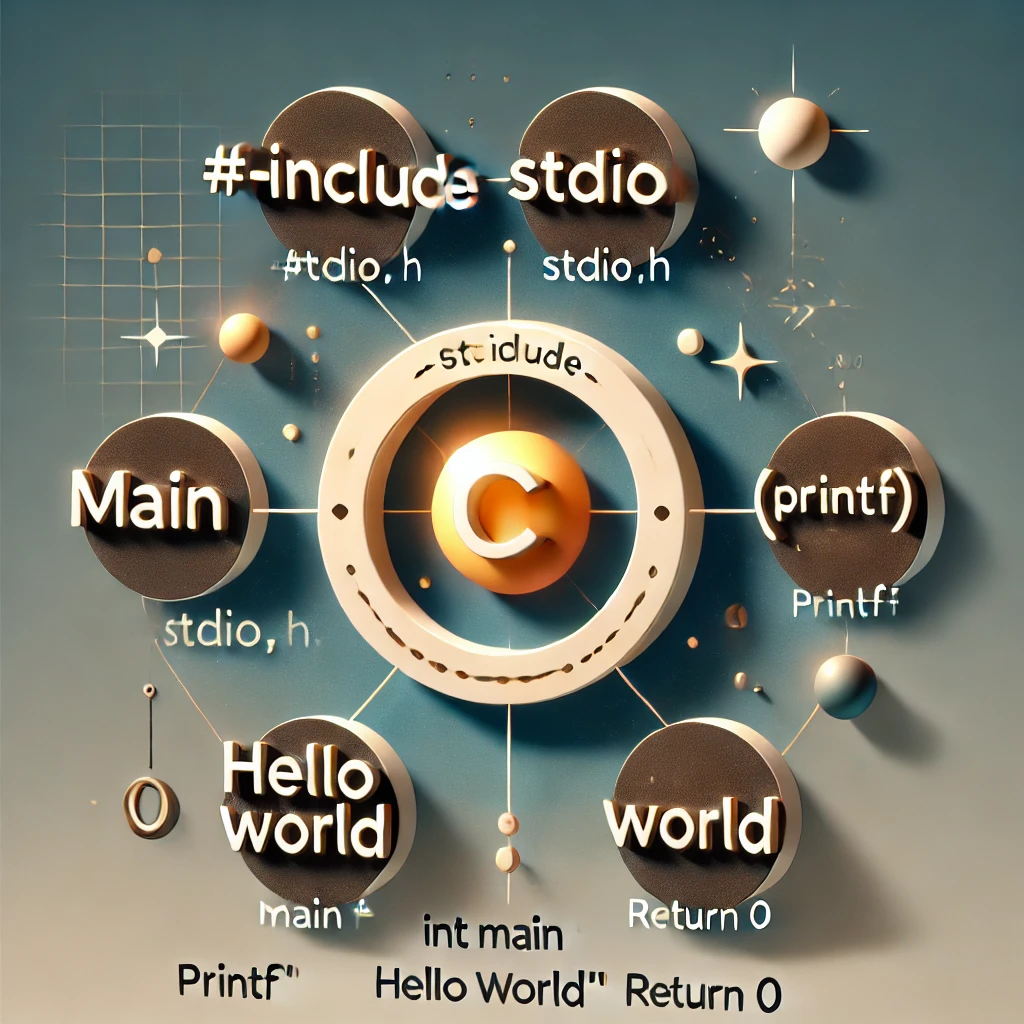In this post, we’ll break down the essential parts of a simple C program. We’ll cover why we include certain files, the purpose of int main, and the meaning of return 0.
Example: A Simple C Program to Print “Hello, World!”
#include<stdio.h>
int main() {
printf("hello world");
return 0;
}Step 1: #include <stdio.h>
The first line in the program is #include <stdio.h>. This line tells the preprocessor to include the stdio.h file, which contains the standard input-output functions like printf and scanf.
Explanation:
#include: This is a preprocessor directive that includes files before actual compilation begins.<stdio.h>: The filestdio.his included to access I/O functions needed in the program.
Pro Tip: Always include
stdio.hif your program uses input-output functions likeprintforscanf.
Step 2: The main() Function
In C, int main() is the starting point of program execution. When you run a C program, the operating system initiates execution by calling the main() function.
Explanation:
- Return Type: The return type
intmeans the function returns an integer value to indicate the program’s status after execution. - Return Value:
- Returning
0indicates successful execution. - Returning a non-zero value (error code) indicates an error in the program.
int main() {
// code goes here
return 0;
}Tip:
return 0indicates the program ran successfully. If any system error occurred, a non-zero value would be returned to signal failure.
Step 3: Curly Braces { }
Since C is a block-structured language, curly braces { } are used to group statements together to form a block of code. Everything within { and } in main() is treated as part of the function.
- Opening Brace
{: Marks the beginning of the code block. - Closing Brace
}: Marks the end of the code block.
Step 4: printf("hello world");
The printf function, defined in stdio.h, is used to print text to the screen. Here, it prints “hello world”.
- Function:
printfis a standard function that outputs text. - Usage:
- Every statement in C, including
printf, must end with a semicolon;.
printf("hello world"); // Prints "hello world" to the screen.Note: If
stdio.his not included, the compiler will issue a warning about an implicit declaration ofprintf.
Step 5: return 0
The return statement in main() is crucial as it provides the program’s exit status.
- Returning
0: Indicates successful completion. - Returning Non-Zero: Indicates an error or unsuccessful execution.
Rule: Always explicitly return
0inmain()to signify successful execution, especially if the program completes without errors.
Full Example Recap
#include<stdio.h>
int main() {
printf("hello world"); // Outputs "hello world" to the screen.
return 0; // Indicates successful execution
}By understanding these fundamental parts of a C program, you’re ready to write and execute simple programs successfully.

creative 👏💯
Thank you sir , good job 👍